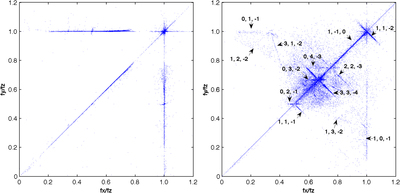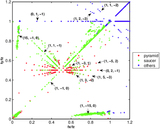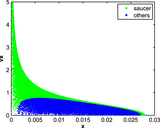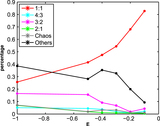Image Details

Caption: Figure 8.
Left: fy/fz vs. fx/fz for Galaxy-sp simulations. 88% of particles are lying at the point (1, 1), which means they have ﹩{fx}={fy}={fz}﹩ and are 1:1:1 tubes, and nearly all the rest of the particles reside on lines ﹩{fx}={fy}﹩, ﹩{fx}={fz}﹩ and ﹩{fy}={fz}﹩; there are no complex orbit types in this model. Right: fy/fz vs. fx/fz for Galaxy simulations. In contrast to the Galaxy-sp model, the Galaxy model has a rich variety of orbits such as (1, 1, −2) and (3, 3, −4), (0, 3, −2), (0, 2, −1), and (1, 1, −1), etc. However, 98% of particles are still short-axis tubes. Here we consider saucers as a sub-class of short-axis tubes.
Copyright and Terms & Conditions
© 2015. The American Astronomical Society. All rights reserved.











